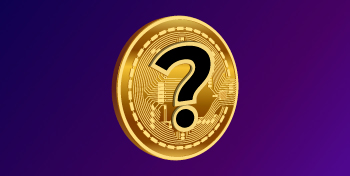NFT tokens, or non-interchangeable tokens , are a solution designed to enable us to represent objects with unique, inimitable, and indivisible qualities in the blockchain.
What is NFT?
Non-interchangeable tokens or NFT tokens are one of the solutions that can be created on the blockchain technology. It also aroused great global interest. But why such an explosion of interest in them? What exactly are they? What is their usefulness?
In this article, we will answer all this, starting with the main thing – what is NFT and what makes them work.
- Non-interchangeable token – a unique representation of the world
First of all, we need to understand exactly what a non-interchangeable token or NFT is. Non Fungible Token). In this case, we can explain the NFT as follows:
A non-exchangeable token is a cryptographic token that can be a unique and unrepeatable token. It cannot be shared, but can be used to represent objects in the real or digital world along with its own characteristics, as well as its property, while storing it all in the blockchain through a smart contract.
This rather simple concept gives us a clear idea that NFTs, unlike the tokens we already know (also called interchangeable tokens), serve to represent unique objects that are not divisible by their properties, without meaning to destroy this object, whether real or digital.
A good example of this would be a collectible. The digital card of a famous athlete with a limited supply and unique digital marking, is a perfect example of a digital NFT token. However, the same thing happens if, for example, the map was real, and we transfer its properties to the digital world using the blockchain. In this case, the physical card has a digital representation, but it will only serve to control ownership of the physical card. This will allow us to track its authenticity at any time, and who previously owned this card.
But you will ask yourself, how is this possible?
- The key to project implementation is smart contracts
The operation of non-interchangeable tokens depends on smart contracts. The purpose of these “programs” in the blockchain is to allow users to create special tokens of this type to represent to them what they want. Almost anything can be represented digitally, and the blockchain is perfect for this.
Let’s remember that a smart contract is a small program in the blockchain that allows us to tell the network to store the information that we specify in a transaction. This way we can access the information or interact with it when we need it. And all this, without forgetting about its basic properties, that is, in an unchangeable and transparent way.
In this case, the developer of the smart contract for the NFT token can create a program with the desired capabilities, with great creative freedom. Thus, almost everything can be stored in the token, if we have smart contracts designed for this purpose.
For example, an insurance company can create an insurance platform with a blockchain, which stores in the NFT the identification data and the necessary permissions to access the data of its customers. Advantage? Some user information can be easily accessed anywhere in the world, it can be easily verified, and data usage is tracked transparently.
Another good example would be digital identity: everyone has a unique identity, and digital identity protected by a cryptographic NFT will allow us to have unique, unrepeatable, and secure digital identities.
Of course, all this is possible thanks to blockchain and smart contracts, which leaves us with another question: which blockchain platforms support the creation of NFT?
- The emergence and development of NFT
In 2012 and 2013, Bitcoin began developing well-known color coins – these were tokens that allowed developers to use the Bitcoin network and coins to represent other assets, tokens, or unique objects with them. The idea of creating colored coins was started by Yoni Assia, known as the founder of eToro, and who presented a document explaining his idea. As a result of this work, a number of projects were born, such as BISQ, OmniLayer (where the first version of Tether USDT appeared), RSK o Counterpart. Then came the first-ever NFT-Pepe, which is still running and accumulating more and more value on the Bitcoin and CounterParty network.
Bitcoin script (the Bitcoin programming language) is not designed for such tasks, which makes it extremely difficult to create highly interactive NFT platforms. This is why Ethereum has leveraged its ability to execute more complex smart contracts while being able to develop much more complex NFTs. The latter has made Ethereum the leading NFT platform in the entire cryptocurrency world, and this trend will undoubtedly be driven by its powerful tools and standards. ERC-721 and ERC-1155, which make it very easy to create tokens and follow a common standard that integrates well with other services.
However, Bitcoin and Ethereum are not the only platforms capable of creating NFT. Other blockchains, such as TRON, EOS, Tezos, Solar, and others, can also work with NFT, all thanks to its advanced smart contract properties.
- How the NFT token works
The operation of NFT tokens may vary depending on the blockchain platform on which they are executed. That is, each blockchain platform has a number of features that allow NFT to act in one way or another. So, for example, NFTs in Ethereum may have slight differences in performance (internally) if we compare them to, for example, those in TRON or EOS.
However, these differences are mostly small, adjustments that are made so that the operation of smart contracts adapts to the blockchain infrastructure in which they are executed. Otherwise, their work is subject to certain parameters, which we can call standard, and which usually follow the structure dictated by Ethereum with its ERC-721 standards and the most recent ERC-1155 standards.
With the creation of ERC-721 and ERC-1155, Ethereum has managed to create several tools that greatly facilitate the creation of NFT platforms. To do this, it provided standard smart contracts with a number of features and capabilities that all NFTs may need to control and develop them. Thus, for example, ERC-721 and ERC-1155 allow you to create, transfer, modify, and even destroy NFTs if necessary.
Pros and cons of NFT

NFT has its pros and cons, just like any technology, and you can distinguish the following:
- Advantages
1. They allow you to represent digital and real objects in a unique and unique way in the blockchain. So we can use this technology to safely manage these objects at any time. Do you want to tokenize your home or car with NFT? You can do this, at this point it depends on your imagination.
2. The possibilities of NFT development are almost limitless, anything you can digitally represent can be turned into a token. For example, domain names (used to identify web pages) can be represented as NFTs in DNS in a block chain. In fact, this is exactly what is happening with the Namecoin y Ethereum Name Service project.
3. NFT creation can be adapted to any block chain and can be implemented in a way that is very secure. An example is Bitcoin, which, with its limited programming capabilities, is able to represent NFT, but by minimizing the security risks for such assets.
4. The availability of standards simplifies their creation, implementation and development.
5. Opportunities for inter-network interaction with various projects.
- Drawbacks
1. Although there are standards for NFT development, they are not infallible and complete in terms of functionality. This is the main reason why, for example, the ERC-721 Ethereum token (the most commonly used for NFT in Ethereum) tends to be replaced by the ERC-1155 token, which is much more secure and has new features.
2. NFTs are managed by complex smart contracts, which makes their operations complex and heavy (in terms of information). These two things increase the amount of fees that must be paid to complete transactions. Simply put, using NFT can be expensive, especially if the network is congested and fees are skyrocketing.
3. Like DeFi, NFT platforms are more vulnerable to hacking because everything is managed by smart contracts and additional interfaces to manage them. All this level of programming adds attack vectors that can be used by hackers for malicious gain.
Using NFT

The possibilities of using NFT are almost limitless. Today, many NFTs are used to create games or digital collectibles. Due to their rarity and uniqueness, they have a very high value for their owners.
In fact, the field of NFT in the gaming world has started to attract a lot of attention in this industry. For example, an RPG game can use NFT tokens to represent objects in the game. At this stage, some of these items may be very, very rare in the game, which would make them very valuable to players. Usually, these games include a marketplace for exchanging these items.
For example, games such as Minecraft, EVE Online, DOTA2 or World of Warcraft have quite expensive items in their assets (if we talk in real monetary terms). So this is a way to further monetize these games. If you add an additional element of NFT and interaction, the possibilities at this stage are almost limitless.
Another use that we have already highlighted is collectibles. Things like stickers of your favorite team, players, curious collectibles, paintings, and others can also be presented using NFT. Thus, they can be exchanged or sold in the markets for a given type of transaction. Digital identification, which is another application that we discussed at the beginning, can also be represented in NFT.
Conclusions
At this point, it is clear that the NFT token, or non-interchangeable tokens, is a promising option and technology in the blockchain world. Its applicability to the world around us is enormous. The NFT token has a wide range of applications that can be explored and developed.
In fact, what we are seeing now is just the tip of the iceberg in terms of the development of these technologies. Therefore, in the near future we will definitely see new developments in this direction, and they will definitely surprise us with their huge versatility and capabilities.


